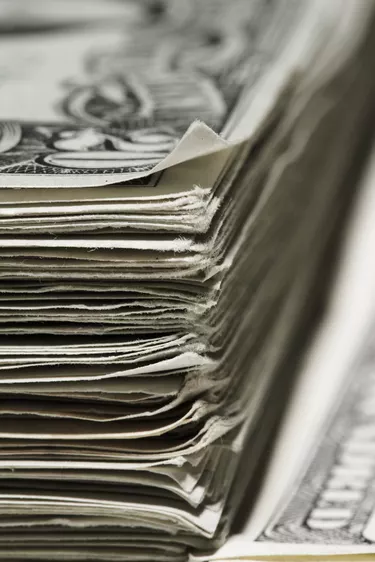
The amount of cash listed on a company's balance sheet includes its physical currency, bank accounts and undeposited checks. Maintaining a strong cash balance provides a cushion in case a company's business suffers a temporary setback. A company reports its cash balance in the "Current Assets" section of its balance sheet, the section that shows assets expected to be converted to cash or used within a year. If you are provided all the other items in the current assets section of the balance sheet and the amount of total current assets, you can solve for the amount of a company's cash.
Step 1
Find the amounts of the noncash items, such as short-term investments, accounts receivable, inventory and supplies, in the "Current Assets" section of a company's balance sheet. For example, assume the company's balance sheet shows $50,000 in short-term investments, $60,000 in accounts receivable, $10,000 in inventory and $5,000 in supplies.
Video of the Day
Step 2
Calculate the sum of the noncash current assets. In this example, calculate the sum of $50,000, $60,000, $10,000 and $5,000, which equals $125,000 in noncash current assets.
Step 3
Find the amount of the company's total current assets listed at the bottom of the "Current Assets" section of its balance sheet. In this example, assume the company shows $200,000 in total current assets.
Step 4
Subtract the amount of noncash current assets from total current assets to calculate the company's cash balance. In this example, subtract $125,000 from $200,000 to get $75,000 in cash.
Tip
Track a company’s cash balance over time to identify any changes. A growing cash balance suggests a company may be improving its performance and generating more sales.
Compare a company’s cash balance with the cash balances of other companies in its industry. A company with a higher cash balance may be in a better competitive position to invest in new technology or acquire other companies.
Video of the Day